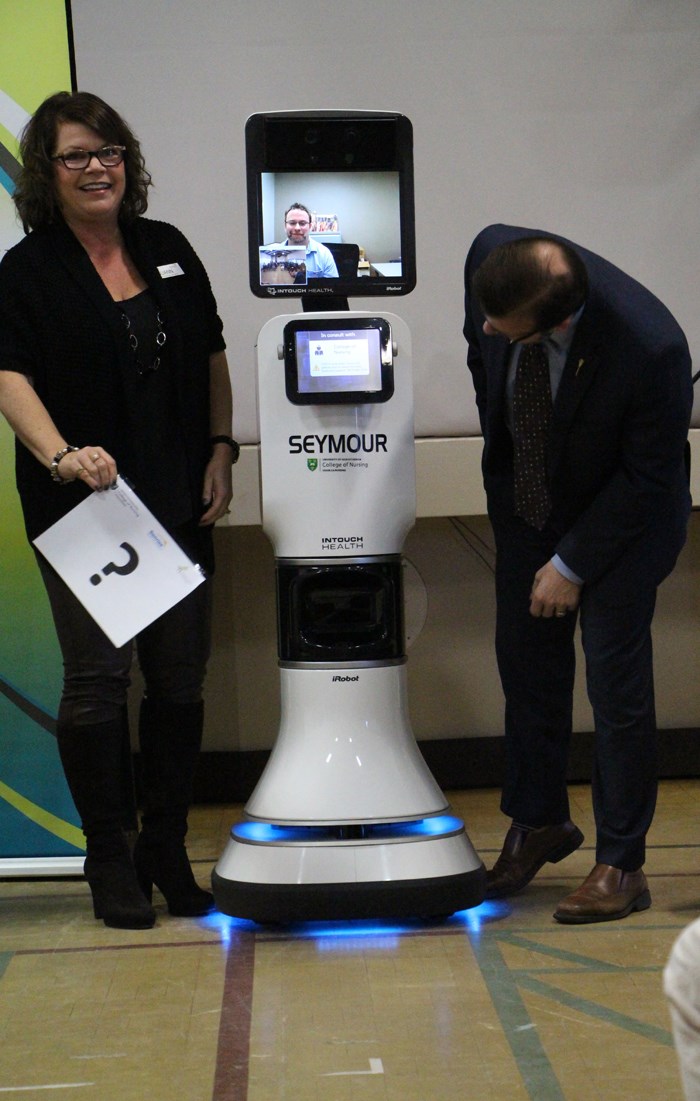The Yorkton Health and Education Robot officially received a new name. Of the 66 entries received to name the robot, the winning entry was Seymour.
Dr. Karen Semchuk, Professor of Nursing for the University of Saskatchewan and Director of Professional Practice for Sunrise Health Region, says that Seymour is an example of how a rural area like Yorkton can use Remote Presence technology to better deliver programming in rural areas. The nursing program, a partnership between the University of Saskatchewan, Sunrise Health Region and Parkland College, uses the robot to bring professors from around the province into the region. The more mobile nature of the machine means it can get right into hospital rooms for practical applications and education.
Seymour works using the hospital’s internal wifi network to connect, and is operated via a laptop and joystick. A monitor on the top of the robot allows students to see the professor, while cameras submit images back to their laptop, wherever they are.
The name, submitted by Carol Stringfellow, plays off of the technology that the robot represents, as it can help students “see more” than they would be able to without the technology.
“To me, the vision of seeing more into the future and more into the possibilities of how we can use remote presence technology to increase and enhance our education and access clinical expertise,” Semchuk says.
Much like the nurses it is helping to educate, it’s what the robot can do outside of the classroom which is most exciting for the health region. Specialists from outside the region can connect through the robot in the same way as the professors at the University, and diagnostic equipment such as stethoscopes can be connected to the robot itself. Because it’s more mobile than the TeleHealth equipment, it is more accessible for patients.
“This robot can wheel down the hallway in a hospital and go right up to a patient’s bed. It has very high resolution technology where it can zoom right in, the clinician who could be in Germany or Regina or the other side of the world can have a close examination of the patient... That’s our plan, to use it in Sunrise.”
Semchuk says that Seymour represents the “Cadillac” of remote presence technology, but she sees it as the start of a much larger trend towards making remote presence the standard for care in the area. She uses the example of a neurosurgeon in Saskatoon, who has given a laptop-based version of the tech to home-care nurses, so he can discharge his patients sooner and consult with them at home.




